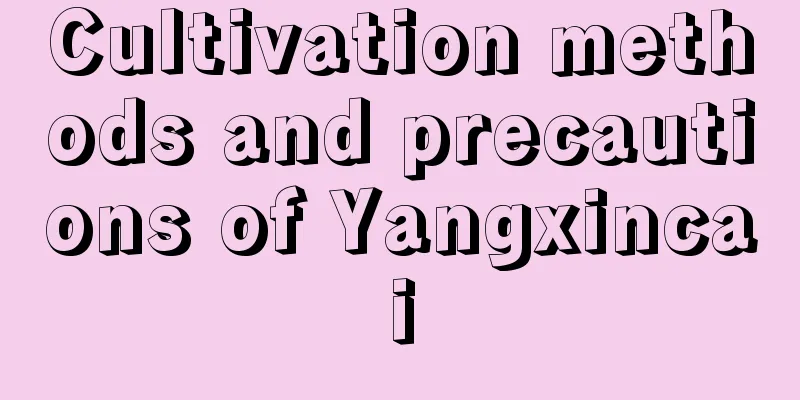Don’t throw away bean curd dregs and eggshells! These things can also be used as flower fertilizer

OkaraThe dregs left over from grinding soy milk are excellent fertilizers. They contain protein, multiple vitamins and carbohydrates. They are non-alkaline and, after artificial processing, are particularly suitable for the growth of flower seedlings. 1. Buried soil fermentation methodMix the wet bean dregs and soil, knead them into a ball, put them in a flowerpot and seal them with a plastic bag. After about two months (about one month if the temperature is high), they can be used for fertilization. They can be used as base fertilizer, and the effect is very good. 2. Soaking and fermenting methodMix bean dregs and water in a ratio of 1:10 and place in a sealed container, being careful not to overfill it. Gas may be produced during the fermentation process, and poor exhaust may cause the fruit to burst. Orange peels can be added during the fermentation process to remove odors. When using, dilute it directly with water and water the flowers and plants once in a while. eggshellThe nutrients such as phosphorus, calcium, iron, zinc, magnesium, etc. contained in eggshells are beneficial to plant growth, and adding them to the soil can improve the soil pH. 1. Collect eggshells for daily use 2. Dry in the sun for a few days 3. Mash 4. Sprinkle in the potting soil Yogurt waterYogurt is high in nitrogen and acidic, making it particularly suitable for foliage plants. 1. Direct useAfter drinking yogurt, rinse the yogurt bottle with clean water and pour it directly on the surface of the potting soil as flower fertilizer. 2. FermentationMix the water used to rinse the yogurt bottle with eggshell crumbs and rice washing water, seal it and ferment it for 7-10 days. Expired milkMilk contains protein, fat, calcium, potassium, iron and manganese, which can be absorbed by flowers and plants to promote their growth. FermentationPut expired milk in a clean container, seal it and ferment it for about 10 days. You can also add a few drops of yogurt to shorten the fermentation process. Add water to water the flowers when using. Rice washing waterRice washing water contains bran and a small amount of broken rice grains, which are rich in phosphorus, nitrogen and other nutrients necessary for the growth of flowers and plants, and are beneficial to the growth of flowers and plants. FermentationCollect the rice washing water, seal it and ferment it for about two weeks. When using, dilute with water and water the flowers. Peanut CookiesPeanut cake is a by-product of peanut oil extraction and can be a high-quality organic fertilizer. It has a high nitrogen content and can be quickly decomposed after being applied to the soil, with a quick fertilizer effect. 1. Retting liquid fertilizerCrush the peanut cakes, mix with ferrous sulfate, add water, add orange peel to remove the odor, seal and expose to the sun for about four months. When using, pour the upper clear liquid and add water to water the flowers. 2. Buried soil fermentationMix a layer of peanut cake and a layer of soil, and it will take more than a year. Sesame CakeSesame cake is the residue left after sesame oil is extracted. It has a high organic matter content and is rich in nutrients. After fermentation, it can be used as fertilizer for flowers and plants. 1. Add water and fermentCrush the sesame cakes, put them into a clean container, add water to cover the surface, add orange peel to remove the odor, and seal for storage. After about four months in the sun, when the fertilizer has no odor, you can take the clear liquid on the top and add it to water for use. 2. Buried soil fermentationThe sesame cakes are crushed, put into plastic bags and buried in the soil for more than a year. Don't throw these things away casually anymore. Using them to make flower fertilizer is simple and convenient. It can also make your flowers and plants flourish. |
<<: How to propagate Polygonatum odoratum
Recommend
Is leek lotus poisonous?
Is leek lotus poisonous? Is leek lotus poisonous?...
When is the best time to eat hawthorn? How to eat hawthorn?
1. When is the best time to eat Hawthorn is a com...
How to grow cantaloupe
1. Maintenance methods 1. Temperature: Muskmelon ...
When and how to repot gardenia
Gardenia repotting time It is recommended to repo...
What kind of pot is good for longevity flowers
1. Requirements The main purpose of choosing a po...
How to cultivate moth and butterfly flower
1. Maintenance methods 1. Temperature: The temper...
What to do if jasmine leaves turn yellow
1. Control watering Cause: Long-term water accumu...
Diseases and their control of Salvia splendens
Red sage leaf virus disease symptom When the plan...
How to prune a potted apple tree
When to prune apple trees Potted apple trees can ...
Can an aloe vera leaf survive?
1. Reasons Aloe vera is a perennial evergreen her...
The difference between rose and wild rose
Different types This is of course the first thing...
How to fertilize cyclamen
1. Liquid fertilizer Because liquid fertilizer is...
How to grow colorful peppers in pots (tips on how to grow colorful peppers indoors)
1) How to sow colorful peppers Under greenhouse c...
How to grow fennel on the balcony
sowing Variety selection Choose seeds with strong...
Can the lotus flower bloom?
1. It can bloom Bowl lotus can bloom. Its flowers...









